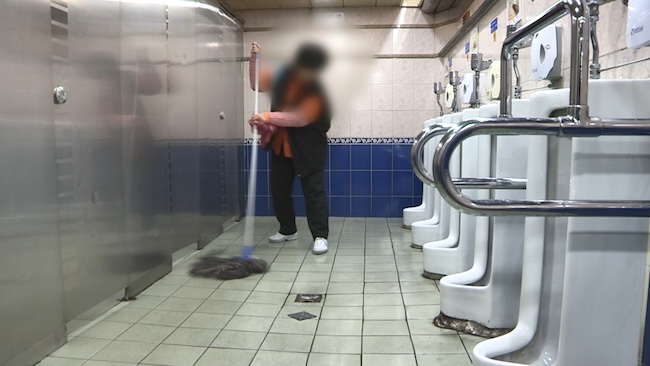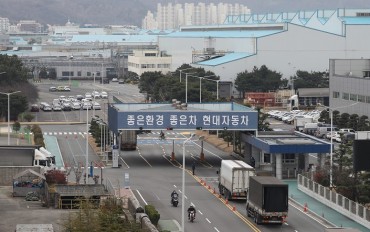
The proportion of employed South Korean women holding low-skilled manual labor positions more than triples after marriage. (Image courtesy of Yonhap)
SEJONG, Jun. 4 (Korea Bizwire) – The proportion of employed South Korean women holding low-skilled manual labor positions more than triples after marriage, highlighting how career interruptions for childbirth and child-rearing contribute to a deterioration in job quality, experts say.
According to microdata from Statistics Korea’s Economically Active Population Survey, there were 2,079,000 women in elementary manual labor jobs like packaging, transport and cleaning as of April, up 125,000 or 6.4% from a year earlier.
Over the same period, the number of men in such roles declined by 79,000 or 3.9%. With women driving the increase, their presence in elementary labor surpassed that of men at 1,966,000 in April.
The share of employed women in elementary labor roles rose from 15.7% to 16.3%, while for men it fell from 12.8% to 12.3%, despite substantial growth in female employment overall – raising concerns over stagnating job quality improvements.
The divergence was particularly stark between unmarried and married women. Elementary labor accounted for 16.6% of employed married women at 1,239,000, over three times the 4.9% rate for unmarried women.
In contrast, the proportion of married men in elementary labor was lower at 11.1% compared to 12.5% for unmarried men.
Among unmarried women in elementary labor, 60.8% were temporary or day workers, while only 0.6% were non-wage workers like self-employed or unpaid family staff. Married women also skewed toward temporary roles at 54.9% but had higher non-wage worker representation at 6.6%.
For unmarried women, manufacturing (29.3%) and accommodation/foodservices (22.9%) dominated elementary labor industries. Married women were more dispersed across manufacturing (16.7%), facility management services (14.5%), health/social services (14.5%) and accommodation/foodservices (13.3%).
The government attributes married women’s concentration in elementary labor partly to surging demand for health and social service jobs amid rising care needs.
However, experts cite career interruptions – where women leave jobs for pregnancy, childbirth and childcare, then re-enter the workforce in lower-quality roles – as a key underlying factor.
The increase in married women in elementary labor has coincided with rising economic activity among those with career gaps, facilitated by lower entry barriers to platform work and care service roles.
“When re-employed, women with career interruptions tend to take lower-quality jobs. Even former regular workers often end up in unstable manual labor,” said Park Eun-jung, an associate research fellow at the Korea Institute of Child Care and Education.
The government is formulating plans to improve social mobility, including boosting female economic participation. Last month’s initial measures included expanded support for re-employment of career-interrupted women such as extended paternity leave.
M. H. Lee (mhlee@koreabizwire.com)






